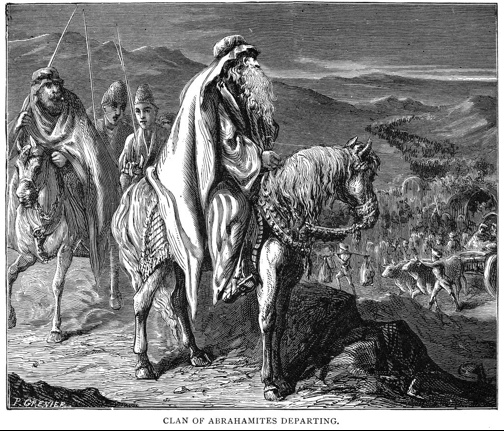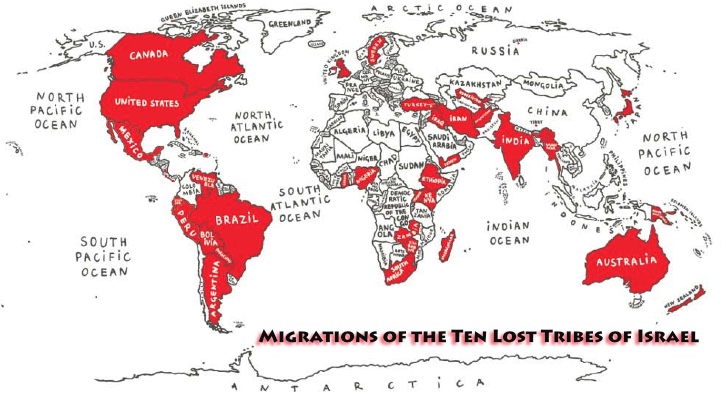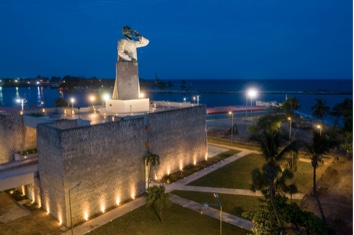.
Tribe of Tequmah
The Twelve Tribes of Israel (Hebrew: שבטי ישראל, romanized: Shivtei Yisrael, lit. 'Tribes of Israel') are, according to Judeo-Christian beliefs, the descendants of the Biblical patriarch Jacob, also known as Israel, through his twelve sons by various women, who collectively formed the Israelite nation. God made this covenant with Israel at Mount Sinai from His servant Moses. Israel failed in their mission (broke the contract) and all twelve tribes were scattered throughout the nations (James 1:1). The ten lost tribes were the ten of the Twelve Tribes of Israel that were exiled from the Kingdom of Israel after its conquest by the Neo-Assyrian Empire circa 722 BCE. These are the tribes of Reuben, Simeon, Dan, Naphtali, Gad, Asher, Issachar, Zebulun, Manasseh, and Ephraim; all but Judah and Benjamin. The contract was then offered to the Gentiles, namely, the church (Rom 11:11-15), and today the church has the opportunity to receive the blessings of the contract.

The origin of the word "tribe" was originally in reference to the tribes of Israel and from their expectation of the messiah, the Church was born. We therefore understand and embrace our living history of the tribes and are descendants (mind, spirit, or body) and tribal members of the original Kingdom of Israel and the Church, embedded in canon, common, international, and statutory laws.
The Ten Lost Tribes as a study is particularly concerned with the massive exploring and speculations that has evolved over the past two millennia over the calling for the precise identity and location of the ten lost tribes. Where and who “today”—that is, at any given moment—are the descendants of the northern Israelite kingdom tribes deported by the Assyrians?
The ten tribes are not merely a random group of people who disappeared following the destruction of their villages. They are permanent exiles of a Biblical prophecy, a missing limb from the body of the “people of Israel,” lost to Jews, Muslims, and Christians alike. The history of this question—the multiple contexts and frames in which it was posed and the multiple answers that have been given—together constitute nothing less than a map of the world and an alternative world history not of secular concern. The tribes have been a marker for defining the world, particularly in Britain while it colonized the world, an empire “where the sun never sets," laying out the new world oikumene (Greek: οἰκουμένη, "inhabited")—at those epic moments in world history during the Age of Exploration that changed the world.
The loss of the ten tribes, described as a “huge tear that does not heal,” by Rabbi Berit Hadash, has spoken to and mobilized thousands of people across different times, places, and contexts, animating the collective unconscious to create different worlds—temporal, geographical, human, mystic, and physical. The mystery of the Lost Tribes helped generate the legends of Prester John, Sambatyon, Arzareth, Marco Polo, the Fountains of Youth, and so many others. It is this loss that has made the legends of the ten tribes a truly global story and mover of human history. And ever unsettled within this profound loss and absence has been its mobilizing corollary: the idea of restitution, redemption, healing, peace, and wholeness. It is a truly fascinating story, a web with so many weavers that have moved armies, kings, queens, the Church and monarchies. It is part of the fabric of Christian legacy and history.
From the prophets of restoration, to the strange and magnificent archeological findings, to our sacred texts, to legends most ancient - Lemuria, Atlantis, the Flood, Noah, the Covenants - to the accounts of Prester John, Marco Polo, of faith healings, the fountains of youth, to hypnotic regressions summoned from the collective unconscious (akashic records) of Mesmer’s disciples, we find a fabric of unity. The migration of the lost tribes spread to the world both East and West, summoned a unity of consciousness from some of the world’s greatest thinkers, from Rabbinical and Christian scholars, from Mesmer to Jungian psychology, to presidents of the United States and Israel.

The contemporary history begins with the Portuguese traveler, Antonio Montezinos (Aharon ha-Levi), who came out of the jungles of Ecuador where he found two natives in a small canoe that started reciting the Shema, from Deuteronomy (6:4), which calls upon all Israel to affirm that the Lord God is their one God which is recited by Jews worldwide. Shortly after Montezinos returned and testified in Amsterdam in 1644 about his encounter with the hidden tribes in the jungles of South America, Manasseh Ben-Israel was “bombarded” by Christian scholars from all parts of Europe with inquiries about this story. English scholars, with whom Ben-Israel—a rabbi of great fame among both Jews and Christians—had been in contact for some time, were particularly interested in Montezinos’ stunning report. It created more than a stir in England, and in London in 1829, Barbara Anne Simon directly considered Ben-Israel in her own book - The Hope of Israel. “Presumptive evidence” was put forward that “the aborigines of the Western hemisphere” were descended from the “Ten Missing Tribes of Israel.” Ben-Israel’s promise of the restoration of peace to the world “and concord, which is the only Mother of all good things.”
Menassah outlined his millennial vision in his original book The Hope of Israel (1650), when he was trying to convince Oliver Cromwell to readmit Jews to England. Puritans were impressed by the conversion to Christianity of Massachusetts’ “Praying Indians.” Also in 1650, Thomas Thorowgood’s Jews in America sparked hopes that discovery of “Jewish Indians” descended from the Lost Tribes heralded the Christian Second Coming.
During the 18th-century Enlightenment, Lost Tribes theories, painstakingly elaborated by Indian trader and naturalist James Adair in his History of the American Indians (1775), influenced an American founding father, Elias Boudinot. Boudinot vouchsafed Adair’s book among Protestant ministers.
In 1829, Mormon Prophet Joseph Smith offered his own revised scripture explaining how the Hebrew Prophet Levi led the Lost Tribes to America in pre-Christian times — long before Jesus lived and died — and who, therefore, were innocent of the crucifixion.
About that time, diplomat-politician-playwright-journalist Mordecai Manuel Noah founded his “refuge” of Ararat in upstate New York. Ararat was a haven for persecuted Jews that reached out to believers of all faiths convinced that the return to Zion of Jews — accompanied by Native Americans descended from the Lost Tribes — would start soon in North America.
By 1900, Mordecai Noah was forgotten, Mormons were a sect in Utah, and “Lost Tribes” imaginings were passé. The superseding scientific theory involved a land bridge over which Ice Age migrants traversed from Siberia to Alaska and then dispersed south.
Actually, as far back the 1600s, Menassah had speculated that the Lost Tribes may somehow have walked from Kurdistan or Afghanistan across Asia to the Americas. Also never forgotten was the theory that ancestors of “Jewish Indians” — over 2,000 years before Columbus — sailed from the Queen of Sheba’s kingdom or a Phoenician city. Immigrant American Jewish authors like Israel Efros and E.E. Lisitzky who wrote in Hebrew helped keep alive “Jewish Indian” speculations. Then DNA sampling opened new vistas.
Hillel Halkin’s Across the Sabbath River (2002) argued for a Lost Tribe along the Burma-India border. Trevor Parfitt mapped an audacious ancient Jewish migration from Yemen to Zimbabwe’s Judaizing Lemba people.

The Montesino Monument de Fray Anton, recently rescued and remodeled, opened its doors to the public during the month of June. Before it was a place with more than 20 years of abandonment, cradle of delinquents, feared by all. Today it is a new meeting point that completes the tourist corridor between the Colonial City and the Malecón de Santo Domingo, Dominican Republic. Every weekend, thousands of locals and tourists come together in this majestic place that offers a range of possibilities for the culture of our city.
Examining biblical, historical, circumstantial and archaeological evidence, this PRIORY shows and firmly believes that the Jewish People and most "Gentiles" of the West are common people - effectively members of the Israelite tribes of the Bible.
Our study and belief is that we are descendants from the ten 'lost' tribes of Israel and are being used by God to bring the good news and blessings to receptive peoples. Examining biblical, historical, circumstantial and archaeological evidence, our studies show that the Jewish People and most "Gentiles" of the West are common people - effectively original members of the Israelite tribes of the Bible. The Bible speaks mainly about the Hebrew Nation, Jesus as a Jew, and ancient Israelites are proven to have migrated to the west with their children, however lost tribal members formed eventually the nations of Britian, France, Holland, Belgium, Finland, Switzerland, Denmark, Norway, Sweden, Finland, the Americas, Canada, Australia, New Zealand, Boriken, Dominican Republic, Cuba, Jamaica, and South Africa. Even individual Israelite tribes are specifically identifiable as historical groups, such as Angles, Jutes, Franks (Merovingians), etc. who settled in distinct areas as in Christendom. This is how from the Tribes of Joseph (Ephraim and Menasseh) and the present day English speaking nations were formed. It is well documented that tribes also appeared as far away as MesoAmerica, explaining how many archeological artifacts of the Indian nations contain ancient Hebrew inscriptions.
The avowed members of the Sacred Tequmah Tribe assert and exercise our ecclesiastical sacred authority within our tribe Tequmah.